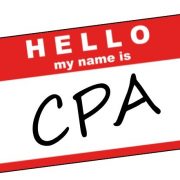“Obamacare” and Qualified Small Employer Health Reimbursement Arrangements (QSEHRAs)
One of President Trump’s most vocal campaign promises was to eliminate the Affordable Care Act (ACA), or “Obamacare”. While some steps have been taken toward accomplishing this goal, the ACA still remains in tact for a few of its key provisions. One of these include Market Reforms, which imposes financial penalties on employers who choose to reimburse their employees for health insurance premiums as a way to circumvent providing group health insurance.
Even though some members of Congress are actively attempting to eliminate various provisions of the Affordable Care Act (ACA), there are many of the ACA provisions which currently remain in effect. The Market Reform provisions are one of those. One of the key provisions of the Market Reforms prohibits employers from reimbursing employees for health insurance premiums. Reimbursing employees for health insurance traditionally had been a way for employers to provide a tax-free fringe benefit to employees where the employer did not maintain its own group health insurance plan. Violations of the Market Reform provisions result in a harsh penalty of $100 per day per employee ($36,500 per employee per year!).
Fortunately, the 21st Century Cures Act created QSEHRAs as a remedy to this prohibition. Employers establishing a QSEHRA are exempt from the $100 per day penalty and can reimburse employees for the cost of health insurance premiums. Like most tax benefits, there are detailed requirements that must be followed to receive tax-free treatment. The following is a list of the major requirements.
- Reimbursements must be funded solely by a small employer (employed less than 50 full-time employees during the prior year),
- Reimbursement may only take place after the employee provides proof of minimum essential coverage,
- Reimbursement may not exceed certain amounts
- $5,050 for single coverage or
- $10,250 for family coverage, and
- Reimbursement must be offered on a non-discriminatory basis to all eligible employees.
In addition, the arrangement must be written and timely communicated to each eligible employee. While there are some additional minor details that must be followed, the QSEHRA has brought back a valuable employer and employee benefit that appeared to be dead immediately following enactment of the Affordable Care Act. Please contact us if you would like to discuss how this type of arrangement may benefit your business.










